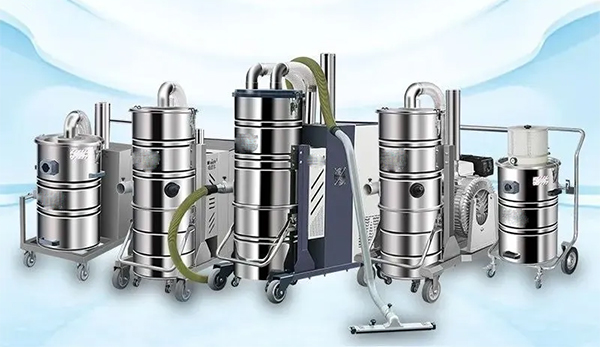What matters most to choose a wet and dry industrial vacuum cleaner?
Most buyers focus on price or suction, but the wrong internal motor or false tank capacity can quietly ruin your cleaning performance—and your profits.
To choose a reliable wet and dry industrial vacuum cleaner, prioritize a real wet-dry motor, honest tank capacity, accurate cord length, and sturdy barrel thickness.
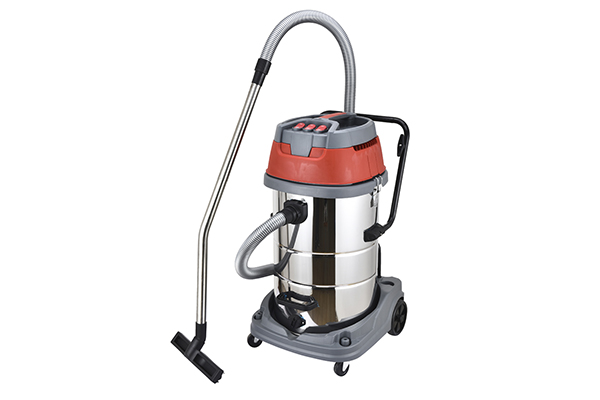
In the world of industrial vacuum cleaners, not all machines labeled “wet and dry” actually are. Some use motors that can't safely handle liquids. Others overstate the tank size, fooling buyers into overpaying. That's why I always dig deeper than just specs—I verify them myself. Let’s break it down together.
How do I choose a wet and dry vacuum cleaner?
Most models look the same on the outside, but inside is where performance either thrives or dies.
Choose a vacuum with a true wet and dry motor that includes water filtration protection. Many low-cost models use dry-only motors that risk failure when wet.
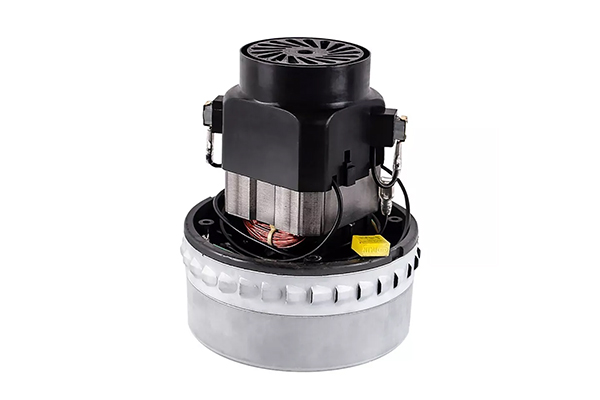
Why using a true wet-dry motor is non-negotiable
A vacuum cleaner labeled “wet and dry” should do both jobs well. But I’ve seen manufacturers install dry-use motors into wet-dry machines just to save cost. These motors might work for dry debris, but they fail once water enters the system. The damage isn’t always instant, but moisture slowly corrodes the motor coil, leading to short-circuits and unexpected shutdowns. The worst part? It voids the warranty and ruins the trust of your customer.
That’s why I always open the motor housing to inspect. A true wet-dry motor should include a built-in water filter system1, sealed bearings2, and a design that allows water vapor to bypass the motor coil. If any of these are missing, it’s not safe for wet use.
Technical Comparison Table:
| Feature | Dry-Use Motor | True Wet-Dry Motor |
|---|---|---|
| Water Protection | None | Integrated filter |
| Motor Housing | Open vent | Sealed chamber |
| Corrosion Resistant | No | Yes |
| Long-Term Use | Unsafe when wet | Safe for liquid suction |
| Cost | Low | Slightly higher, but worth it |
Always ask for technical drawings or cross-section photos from your supplier. This is how I verify we’re using real wet-dry motors in our products.
What to look for in a wet dry vac?
Everyone talks about suction power, but that’s not the only metric of a good wet-dry vacuum.
Check whether the tank capacity is truthful. Some brands advertise 100L but only give you 80L of usable space.
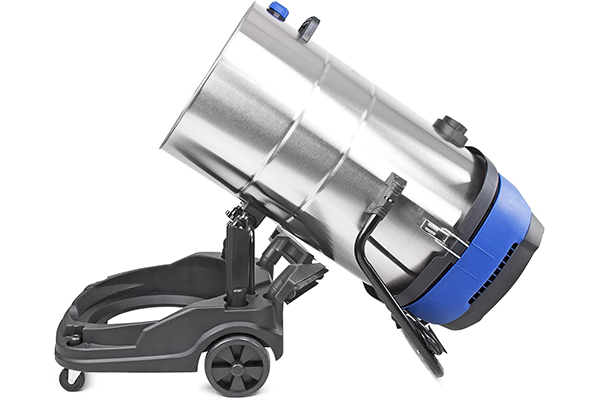
Real vs. fake tank capacity—and why it matters to your business
Tank capacity is one of the most abused specs in the industrial vacuum cleaner market3. I've seen countless models advertised as “100L” when their inner tank is only 80L. This might seem like a small issue, but it leads to serious problems over time. Workers must stop more often to empty the tank, which reduces productivity. Customers feel misled, especially if they expect long intervals between emptying cycles.
The easiest way to check is by calculating volume from inner dimensions4 (height × diameter × π ÷ 1000). Don’t rely on outer shell size—it includes wheels, motors, and handles. In my factory, I also test by filling the tank with water up to the safety overflow line.
Tank Capacity Truth Table:
| Advertised Volume | Actual Internal Volume | Honesty Rating |
|---|---|---|
| 100L | 80L | Misleading |
| 100L | 100L | Honest |
| 80L | 80L | Transparent |
Always include tank volume inspection as part of your quality check process. It affects both product reputation and price accuracy.
What should I look for in a good vacuum cleaner?
It’s not only about what’s inside. Even external design plays a big role in daily use and safety.
Check that the exposed power cord length matches the spec—many list 5M or 7M cords but deliver shorter ones.
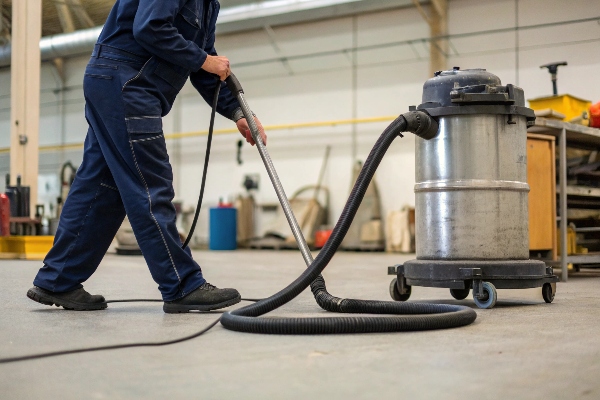
Don’t overlook cord length—it affects usability and safety
In a warehouse, you don’t want workers constantly unplugging and moving machines. That’s why I insist on measuring cord length manually during quality inspection. I’ve seen machines labeled with “7M cords” that actually had only 5.5M usable cord outside the machine. It’s not just inconvenient—it creates safety hazards with extension cords and limits effective range.
Also, the cord should be thick, flexible, and resistant to industrial wear. I personally check if the plug is molded or screwed—molded is better because it’s sealed. I also ask if the cord has strain relief where it enters the machine. This protects the internal wiring when workers pull on the cord.
Cord Inspection Checklist:
| Specification | What to Verify |
|---|---|
| Cord Length | Use a tape measure to confirm exposed cord is truly 5M or 7M |
| Cord Type | Industrial-grade rubber jacket, not brittle plastic |
| Plug Quality | Molded, grounded plug preferred |
| Strain Relief | Flexible sleeve at entry point to prevent tearing |
Every small spec like this adds up. Over time, good design saves costs on repairs and improves daily operation for your customer.
Which wet and dry vacuum cleaner is best?
Even with great internals, your vacuum must physically withstand industrial abuse.
Inspect the thickness of the vacuum barrel—cheap models use thinner materials that dent, rust, and collapse over time.
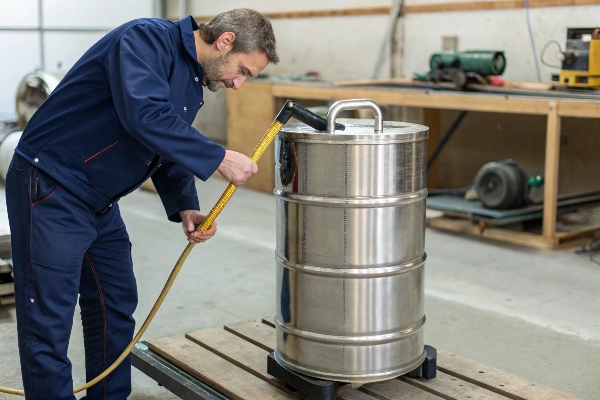
How barrel thickness impacts longevity and cost-per-use
One of the most underrated features of a vacuum is its barrel thickness. In industrial settings, the machine is moved often, bumped against shelves, hit by forklifts, and exposed to harsh weather. I’ve seen vacuums with 0.4mm steel barrels dent within weeks. This affects sealing, airflow, and even causes water leaks.
In my product line, I insist on minimum 0.6mm barrels, but for demanding clients, we go up to 0.8mm stainless steel. The thicker the material, the heavier the product—but that weight also signals durability. I recommend asking the supplier for total product weight and material thickness listed in micrometers. If they can’t provide it, that’s a red flag.
Barrel Thickness Guide:
| Thickness | Use Case | Durability | Rust Resistance |
|---|---|---|---|
| 0.4mm | Light duty | Low | Poor |
| 0.6mm | Standard factory use | Medium | Acceptable |
| 0.8mm | Heavy-duty industrial | High | Excellent |
For OEM clients like Kevin, I always provide both thickness and weight data in the product spec sheet. It’s a simple way to prove product quality and justify pricing.
Conclusion
To avoid regrets and losses, verify the motor type, tank size, cord length, and barrel thickness before choosing a wet and dry industrial vacuum cleaner.
-
Understanding the built-in water filter system can help you choose the right vacuum cleaner for both wet and dry cleaning tasks. ↩
-
Sealed bearings are crucial for preventing moisture damage; learn more about their role in enhancing motor longevity. ↩
-
Exploring market trends can help you make informed decisions about purchasing and using vacuum cleaners effectively. ↩
-
Understanding this formula is crucial for accurately assessing tank capacity, ensuring you get what you pay for. ↩

